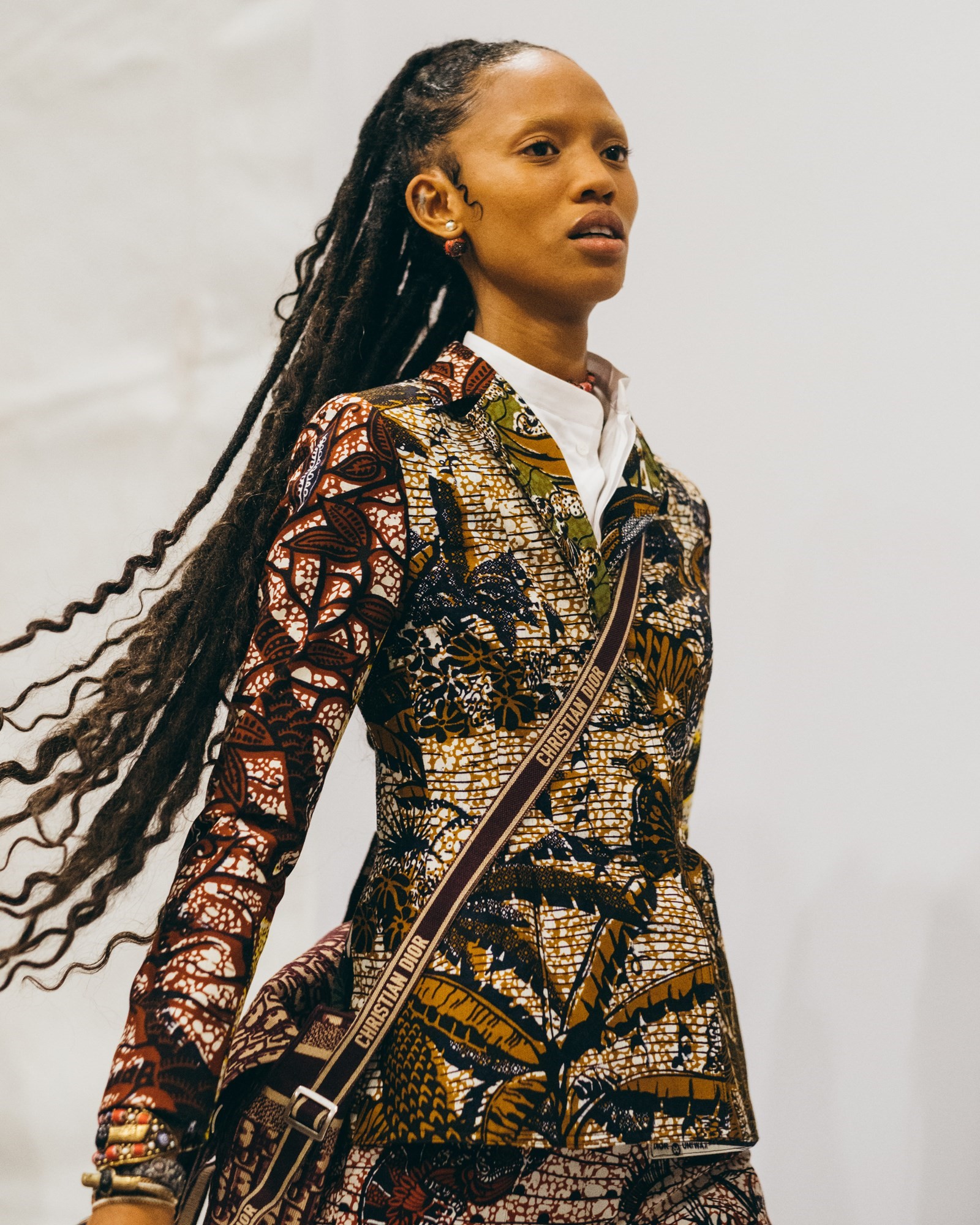Fashion is all about collaborations: a designer can’t create alone. They need their ateliers and factories; models, stylists, hair stylists and make-up artists. Someone has to do the calligraphy for the invitations. It takes an army. Which was, in a sense, one of the inspirations behind Maria Grazia Chiuri’s 2020 resort show for the house of Dior. Of course, the inspiration was also Africa, multicultural and multi-faceted, with traditional Dutch wax-fabric patterns and billowing djellabas staged in a ruined 16th-century Sultan’s palace in Marrakesh, where Chiuri’s all-woman army marched out amid flaming tapers and heavy incense. It reminded me of something the late, great Karl Lagerfeld, Maria Grazia Chiuri’s former boss at Fendi, once told me of the workers in the couture ateliers: “They are beyond important because somebody has to make the clothes! I may have a few ideas, but I cannot make the collections.”
Chiuri’s scope in this Dior collection was ambitious – it isn’t easy to unravel, although the clothes it resulted in were easy and wearable, in the grand tradition of cruise wear. The collaborations here weren’t metaphorical or alluded to, and they weren’t restricted to the necessary: that of creator with craftspeople, tasked with translating a dress from abstract sketch to material reality. These collaborations were physical, tangible, exceptional even – unexpected, bold, confident. Chiuri invited the British-Jamaican designer Grace Wales Bonner and the African-American artist Mickalene Thomas to create their own interpretations of the Bar. Thomas’ was a facsimile of the 1947 original – reinterpreted in her own rich style, presented on a woman of colour – like one of Thomas’ paintings, introducing the black female body to art history, such as her 2010 re-working of Manet’s Le Déjeuner sur l’herbe, and reclaiming their agency. With a tilted saucer hat and billowing skirt, Thomas’ collaboration cut to the heart of Dior – a silhouette, an avatar we can all recognise – yet proposed it anew. And, of course, Christian Dior himself loved avant-garde art: he was originally a gallerist, supporting avant-garde and surrealist art before the Great Depression wiped out his family’s fortunes and Christian had to find work using his own artistic expression by selling sketches to couture houses and beginning the unexpected and slippery climb to stardom, via his 1947 debut.
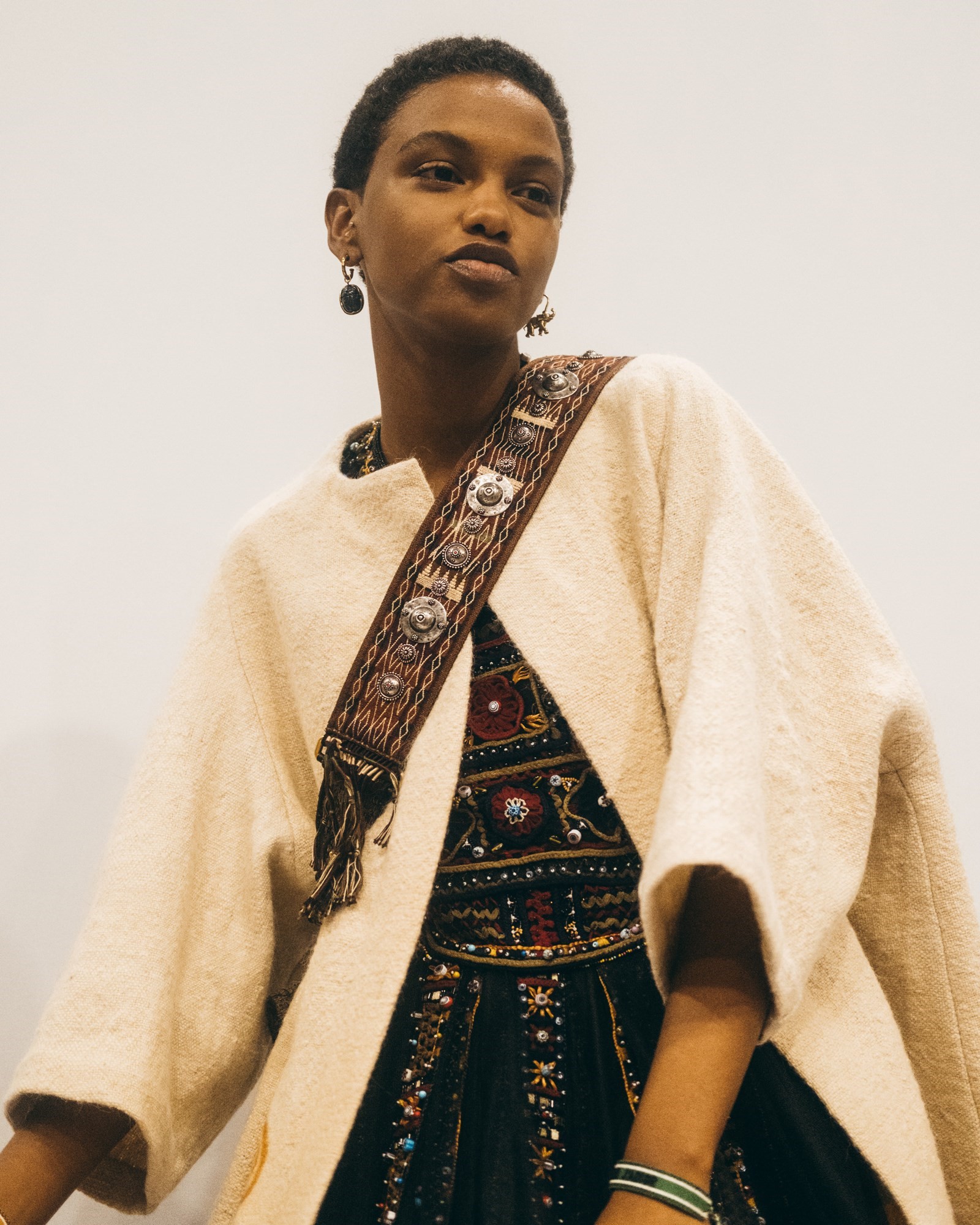
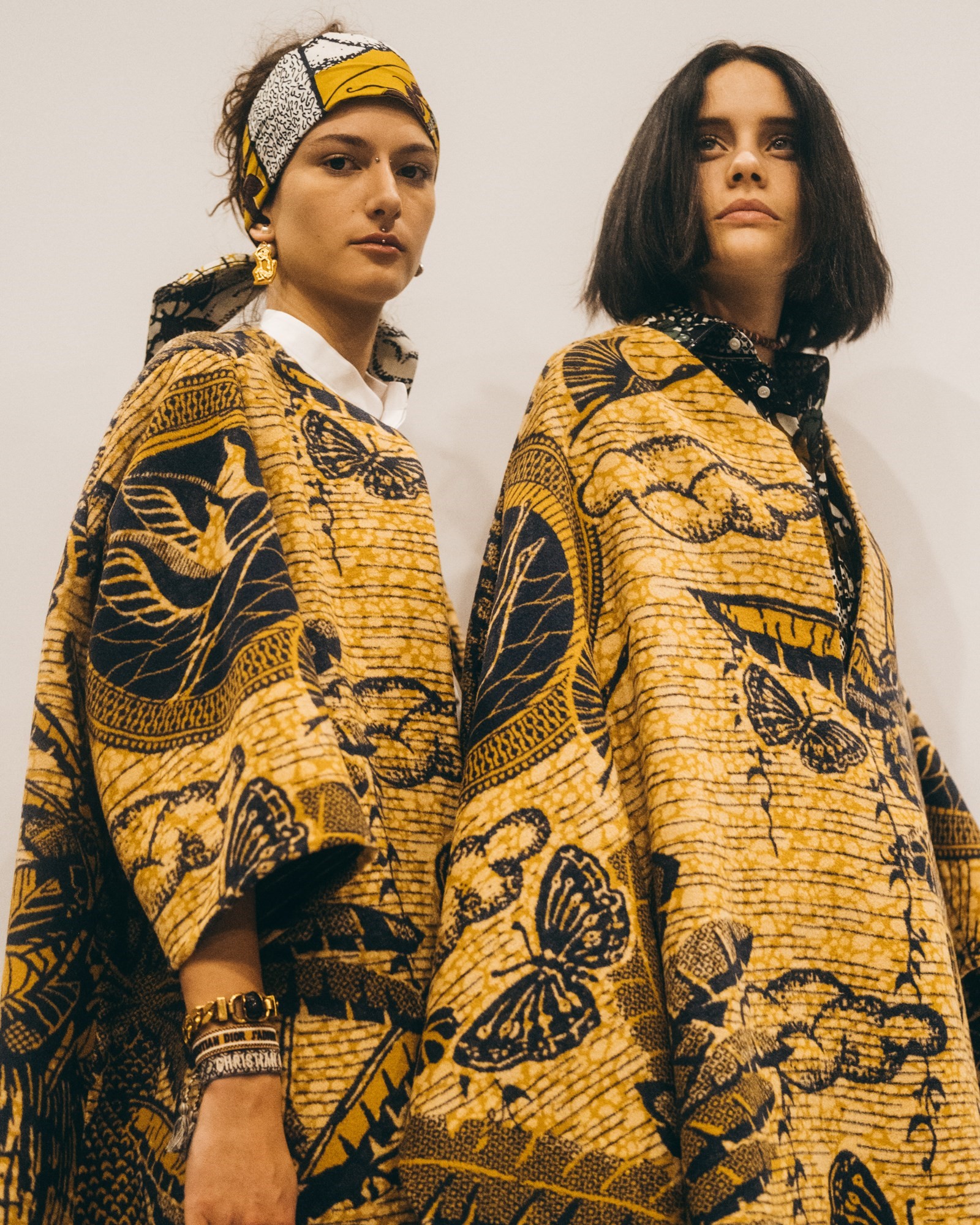
Of course, at that debut, the New Look was present. It always is – that’s another collaboration, of sorts, between the present and the past. “Dior is a couture brand, and the most iconic element is the New Look,” Chiuri stated a day before her show while behind her a model was wearing her own version of that Bar – curvy jacket, wide-cut trousers – executed in Dutch wax textile. That represented in microcosm, another series of collaborations, sparked by conversations with textile anthropologist Anne Grosfilley, who became an advisor on the collection itself. Chiuri was fascinated by Dutch wax, a fabric composed of cotton traditionally woven in Europe, sent to Indonesia and dyed using up to 20 individual techniques, of batik and block printing, and then exported to Africa, where it became enormously popular. “It’s a pan-African fabric,” states Grosfilley, reasoning that the material is used across the continent’s 54 countries universally, with multiple interpretations of popular images: often marked with vibrant symbols and patterns whose meanings shift over time, the donning of specific wax fabrics can be used to signify joy at the birth of a child, for instance; or messages of freedom, aspiration and affluence. It began to be used in 1895, today, about 95 per cent of the signature textiles are actually digital print copies, while true Dutch wax is rare, expensive and labour-intensive. Chiuri turned to the Uniwax studio in Abidjan, Ivory Coast to create a new print – inspired by toile de Jouy and tarot card references drawn from elements in Dior’s heritage, but reinterpreted by the Uniwax studios. And Pathé Ouédraogo (aka Pathé’O) a designer whose most widely seen work outfitted Nelson Mandela, also created an outfit in collaboration with Dior, paying tribute to the South African president.
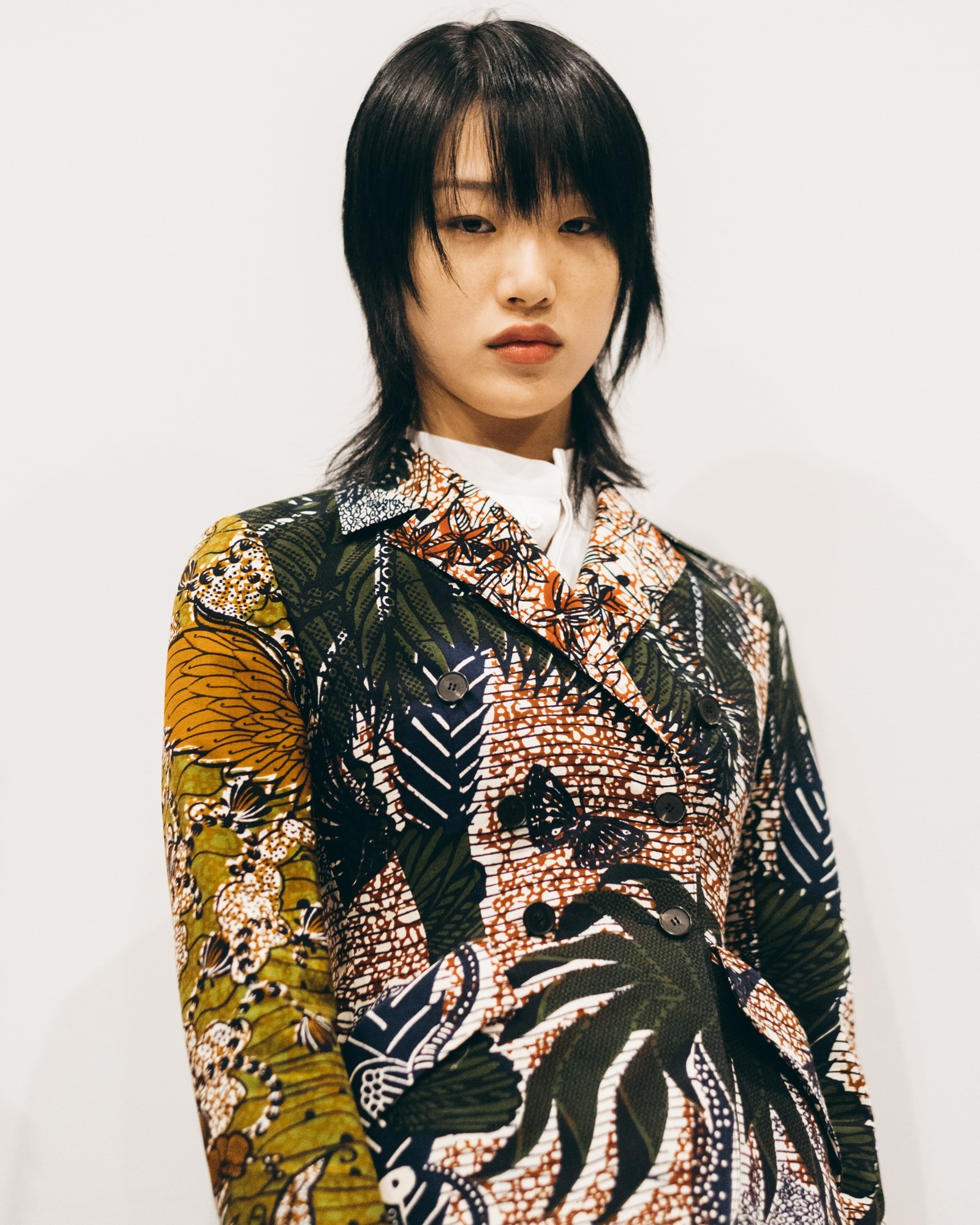
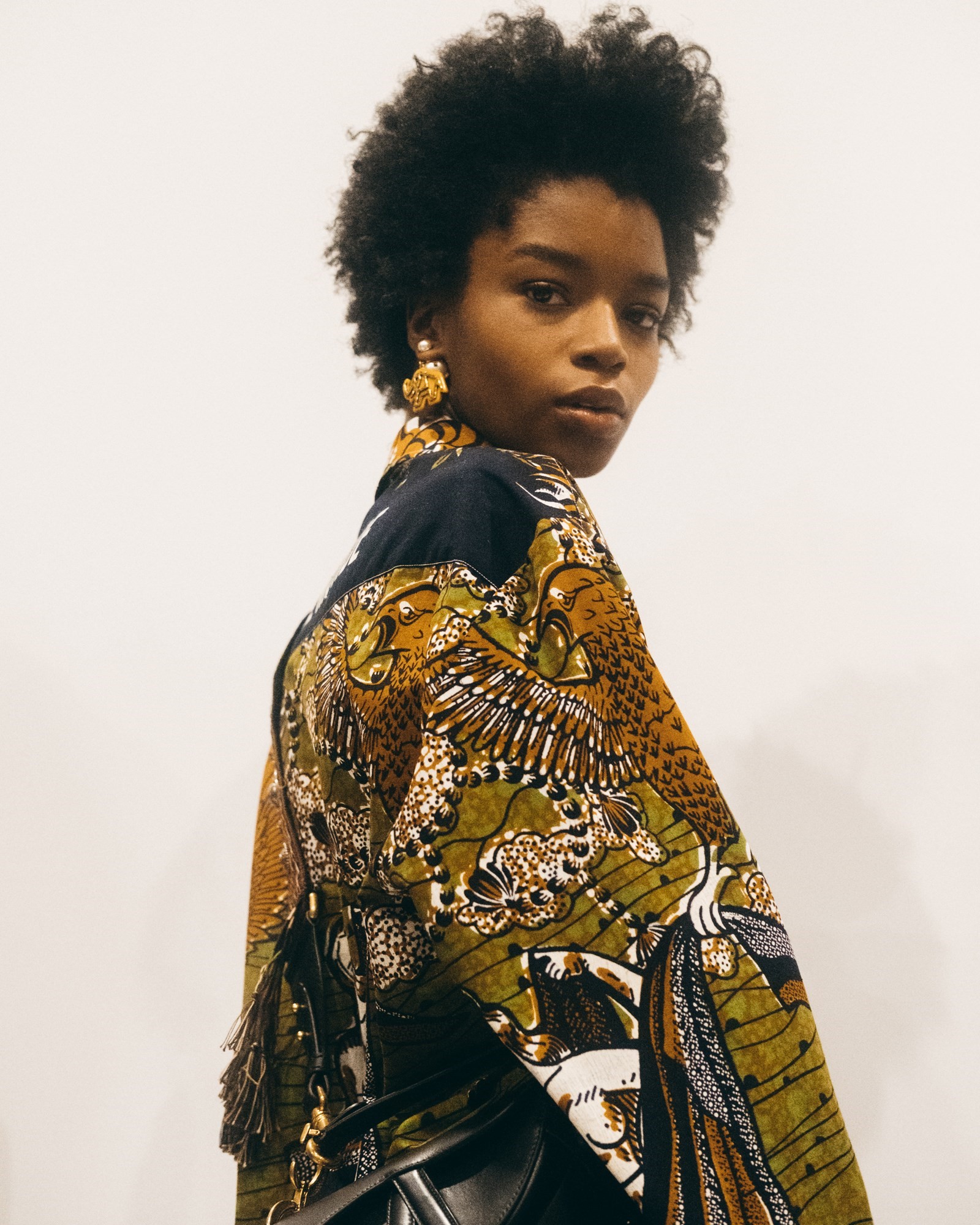
It’s bold, for a designer to throw the doors of a fashion house open to other people’s interpretations. Chiuri shrugged when that was posited to her. “You don’t lose anything,” she said. “I am not alone.” Indeed, an equal inspiration to that of Africa was the most abstract notion of communities of craft and creativity, coming together in a collective experience. A cultural exchange, regardless of the locale. There were also Americanised denims and French laces, alongside the African textiles (not just African in look: established in 1968, Uniwax weave and dye all their textiles in Abidjan, resulting in a wholly authentic cloth), and a sense of ease and easiness Chiuri herself pegged as fundamentally Italian. “We have to talk about what we have in common,” said Chiuri. “Common ground” – how about the fact we all have to wear clothes, of one form or another, for protection, or display, or merely to prevent us from being arrested on the street? And that, in some way, those clothes can semaphore something about our characters, feelings, aspirations and ideals. That’s something universal.
